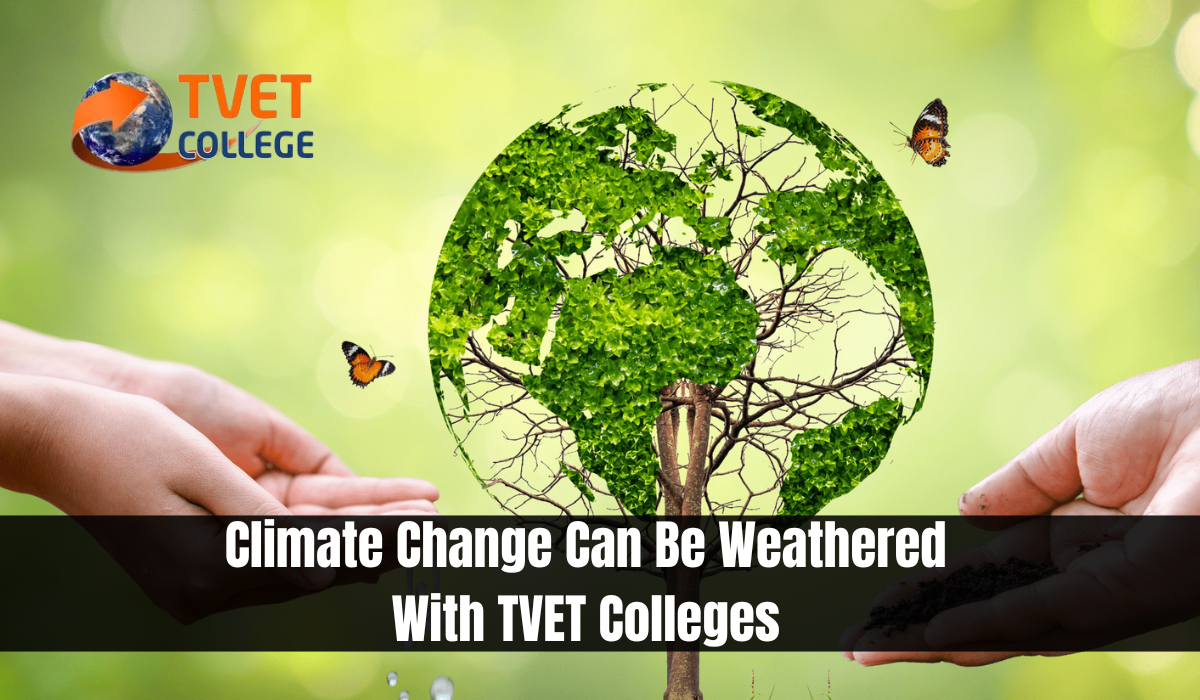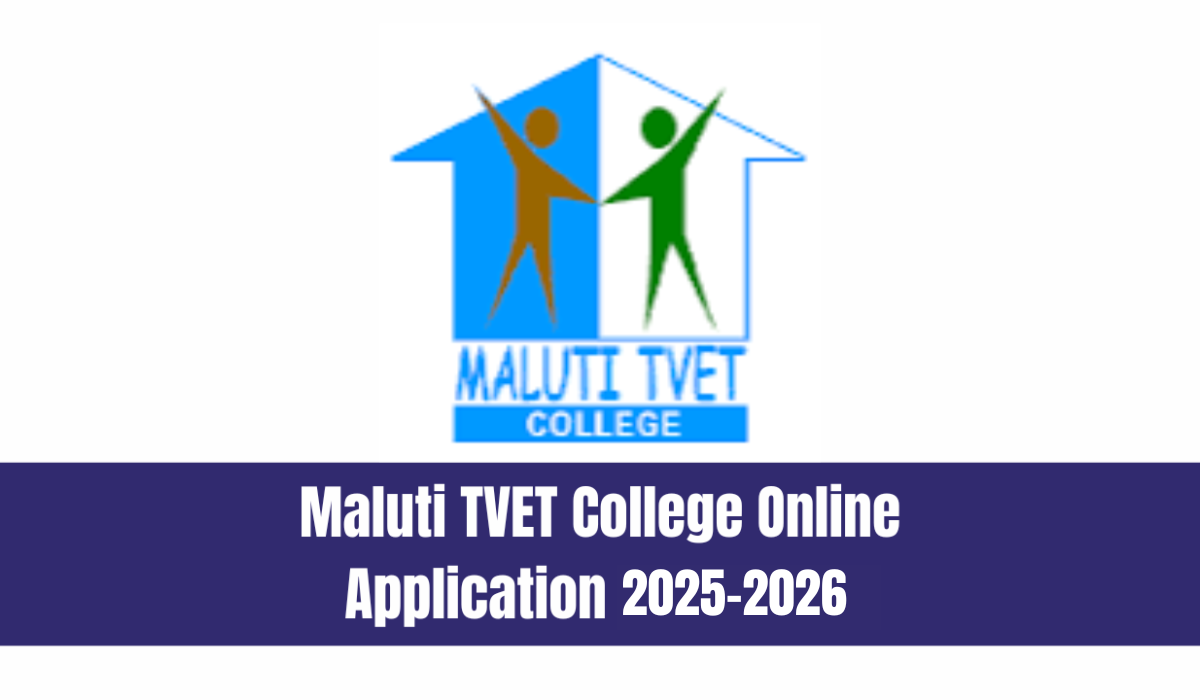Climate Change Can Be Weathered With TVET Colleges

Climate Change Can Be Weathered With TVET Colleges. Climate change and its devastating effects are no longer the stuff of science fiction. It’s not a dystopian future portrayed in movies; it’s here, now, impacting lives. In April 2022, the storm system Issa unleashed torrential rains on KwaZulu-Natal, leading to catastrophic flooding and mudslides. Over 40,000 people were affected, and tragically, 440 lives were lost.
Fast forward to June 2023, when the areas of Newcastle, Utrecht, Ballito, and oThongathi were devastated by a tornado, resulting in more destruction and loss of life. Meanwhile, in the Eastern Cape, Buffalo City and Nelson Mandela Bay faced similar tragedies, as homes were washed away and lives were lost due to heavy flooding.
These extreme weather events, becoming disturbingly regular, are stark reminders that we must take action. If we are to survive and mitigate the effects of climate change, the time to learn and act is now. Technical Vocational Education and Training (TVET) colleges, particularly those located in district and rural areas, have the potential to play a pivotal role in this effort. Through strategic educational programmes, TVET colleges can equip people with the skills they need to protect their communities from the destructive forces of climate change.
The Growing Threat of Climate Change
Climate change threatens to undo the progress we’ve made—economically, socially, and politically. We know the risks all too well. Our scientists have forecasted what the next 5, 10, 20, and 50 years will look like. The models are clear, and so are the warnings from environmental activists: without action, climate change will widen the gap of inequality as more and more people struggle to rebuild their lives in the wake of extreme weather events that seem to come yearly.
But amidst these challenges lies an opportunity—an opportunity for TVET colleges to be at the forefront of climate change mitigation through education. By aligning their programmes with the local Integrated Development Plans (IDPs) of district municipalities, TVET colleges can offer courses that not only bolster the economy but also equip individuals with the tools to combat climate-related disasters.
Learning From the West Coast Approach
Take the West Coast municipal district’s Integrated Development Plan 2022–2027 as an example. This municipality has recognized climate change as a severe risk to its environmental and socio-economic stability. The plan highlights several key areas for climate change mitigation, including energy efficiency, renewable energy, sustainable transport, food security, and social resilience.
Despite this progressive plan, there remains a disconnect between the needs of the municipality and the courses offered by the local TVET college. Currently, there are no courses in conservation management, sustainable fishing and maritime practices, or sustainable infrastructure building. These are critical areas that could help the municipality and its residents withstand future tornadoes, droughts, and floods.
This gap between public TVET education and local needs is emblematic of a larger issue. Climate change reveals the socio-economic inequalities still present in our society. The urgent need for municipalities to grow economically and address climate change at the local level must be supported by TVET colleges that provide relevant, localized skills for climate resilience.
The Potential of TVET Colleges in Climate Mitigation
TVET colleges can, and should, be instrumental in equipping communities with the skills needed to survive and thrive in the face of climate change. The opportunities to re-imagine the role of public TVET colleges in this effort are vast and already exist within our policy landscape. Here’s how TVET colleges can become the linchpin for local climate resilience:
1. Closer Integration with District Development Models
By incrementally devolving higher education TVET mandates to provinces and local governments, TVET colleges can bring their functions closer to the strategic environment of district development models. This would allow for more effective planning within intergovernmental spaces and leverage policies that encompass economic, education, labor, and environmental needs.
2. Tailored Courses for Local Needs
TVET colleges have the potential to offer courses that directly address the economic, social, and environmental needs of local municipalities. Imagine courses in primary healthcare, disaster and humanitarian response management, coastal and biodiversity stewardship, and sustainable agricultural practices. These programs would not only address climate change but also boost local economies by creating a skilled workforce capable of dealing with the specific challenges their regions face.
3. Expansion to Rural Areas
Expanding TVET campuses to rural areas is crucial. Many young people in rural communities do not have post-schooling options, forcing them to migrate to urban centers. By offering accessible education where they live, TVET colleges can retain local talent and provide the necessary skills to support local industries. In the process, they can reduce the “brain drain” that often plagues rural areas.
A Disconnect in the Current System
Currently, public TVET education remains a centralized system with little to no direct connection to the service delivery and growth demands of local municipalities. Despite this, the potential for TVET colleges to help communities build sustainable social housing, energy-efficient systems, and resilient infrastructure is enormous. Workers trained in these areas would be invaluable assets in the fight against climate change, enabling municipalities to withstand destructive events while safeguarding people’s safety and security.
It is at the local government level where TVET colleges can truly shine by aligning their offerings with the economic, social, and environmental needs of their communities. We cannot afford to miss this opportunity to reimagine the role of TVET colleges in building a sustainable, climate-resilient future.
Conclusion
Climate change is not just a challenge for scientists, politicians, or activists. It is a challenge that affects all of us, and it demands local solutions. TVET colleges, with their potential to educate and skill young people, can be a crucial part of this solution. By integrating climate change mitigation into their curricula, aligning with local development plans, and expanding into rural areas, TVET colleges can become the backbone of community resilience. Let not lose this chance to re-imagine a future where education, economic growth, and environmental stewardship work hand in hand to weather the storms of climate change.












